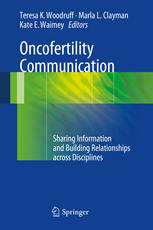

Most ebook files are in PDF format, so you can easily read them using various software such as Foxit Reader or directly on the Google Chrome browser.
Some ebook files are released by publishers in other formats such as .awz, .mobi, .epub, .fb2, etc. You may need to install specific software to read these formats on mobile/PC, such as Calibre.
Please read the tutorial at this link: https://ebookbell.com/faq
We offer FREE conversion to the popular formats you request; however, this may take some time. Therefore, right after payment, please email us, and we will try to provide the service as quickly as possible.
For some exceptional file formats or broken links (if any), please refrain from opening any disputes. Instead, email us first, and we will try to assist within a maximum of 6 hours.
EbookBell Team

5.0
28 reviewsOncofertility integrates the two previously distinct fields of cancer treatment and fertility research and aims to explore and expand the reproductive future of cancer survivors. In order to achieve the goal of fertility preservation, the Oncofertility community must focus on communication and the way data is provided and received. Concomitant with the rapidly changing technology of Oncofertility, there have been radical shifts and advances in the way health educators and clinicians can produce and share information. As success rates of reproductive techniques such as egg freezing and banking continue to rise, providing increasing opportunities for young cancer patients to preserve their fertility prior to the onset of cancer treatments, communication among professionals in oncology, reproductive medicine, and psychosocial work, among others, becomes crucial, and clinical demand for Oncofertility information is expected to rise considerably.
Oncofertility Communication describes and addresses the myriad channels through which the multiple audiences involved in Oncofertility can be served with appropriate and accurate information about cancer-related fertility issues. The text answers frequently asked questions and provides invaluable insights to scientific and health care professionals about communication among the diverse Oncofertility audiences. It incorporates timely discussions about traditional and emerging electronic communication tools and discusses the impact of health care policy changes on the Oncofertility field.